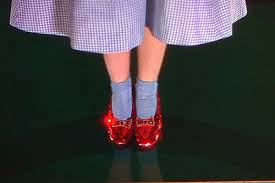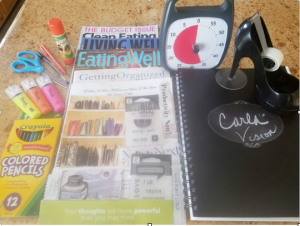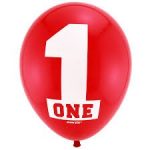 Relocation is one of those infamously “stressful” times of our lives. Even those of us who are veterans will admit to the fact that the sheer amount of facets that need to be managed during a move adds some level of anxiety.
Relocation is one of those infamously “stressful” times of our lives. Even those of us who are veterans will admit to the fact that the sheer amount of facets that need to be managed during a move adds some level of anxiety.
Whether moving near or far, change is part of the package – new people, new schools, new jobs, new neighborhoods, new neighbors and yes, a new home.
My husband’s corporate job moved us (a family of five) around the U.S. for a period of over 20 years. I realized from the very beginning that this would be a way of life for our family for quite some time. In order for us to not only keep our sanity but actually enjoy the adventure, I needed to have a plan. Essentially, my plan developed from taking a step back and seeing the big picture. I asked myself:
By answering these questions, I was able to prioritize the steps of our move and create a repeatable process to carry us through each successive relocation. I hope that my answers might help you look at your own family’s needs in the face of one or multiple moves.
What will our nomadic life look like?
Truth be told, many a friend and family member worried aloud about how my children would fare growing up without the consistency of a hometown, schools and friends. I chose to envision a life that would be enhanced by our travels – my children would learn that people are people wherever you go, no matter how they look or sound. They would experience cities and environments rather than merely reading about them – things like walking on Mt. Rainier (an active volcano), battling to walk down Michigan Ave while leaning into the Chicago wind, and watching dolphins jump in the coastal waters of Florida. I shared my vision and excitement with the rest of my family and let them know how lucky we were!
What can or will change?
Almost everything! As far as living spaces were concerned however, the changes involved the size and number of rooms and the amount of storage. Would the garage be large enough for cars, bikes and storage? Would there be a basement? Would the kids each have their own rooms or will they have to double up? Some changes were welcome, others less than desirable. Adding some creative storage and decorative accents always helped with the adjustment.
What can or needs to stay the same?
I decided that since all of our surroundings including most of the people would be changing, it would be important to preserve things that gave us “roots”. With each move I kept much of our décor the same, especially for the kids. I would hang their curtains right away and keep the same bedding. Those things changed at times when they grew out of them. We would have weekly letter-writing sessions in order to maintain relationships with family and friends. This had so many benefits: family time together, honing writing skills, honing relationship skills. I also made it a point to cook traditional holiday recipes so that we wouldn’t forget our family background and would feel connected on holidays when we couldn’t actually attend in person.
What will support each family member?
This is where organization really became essential. It is difficult to be successful, in anything and at any age, if your surroundings continue to change. Therefore, I would set up each home with consistencies. Kitchens were always arranged with table settings nearest the table and furthest from my cooking area so that kids could help and not be underfoot. Drawer items in kitchen, bedrooms and bathrooms were set up in similar order from house to house. Garage and laundry bins followed suit. Within no time, everyone knew where to find what was needed regardless of the new home layout.
Even though you may move often: embrace your life, be kind to yourself and your family and you can always be living at Home.
Click on the above title to learn more about the featured author.
 So much of getting organized is about building new habits. To maintain those habits, you have to exercise your organizing muscles regularly. Below are a few exercises to help you get into shape.
So much of getting organized is about building new habits. To maintain those habits, you have to exercise your organizing muscles regularly. Below are a few exercises to help you get into shape.
Remember, one of the fastest ways to feel lighter is to exercise your organizing muscles by shedding pounds of clutter. Happy New Year!
Click on the above title to learn more about the featured author.
 As 2016 is winding down, we embark on a new chapter in our lives in the New Year. For most, the challenge is to figure out our purpose in life and what we would like our story to be for 2017. We all have a purpose in life and it’s just a matter of being conscious, and knowing and believing that there is a divine order.
As 2016 is winding down, we embark on a new chapter in our lives in the New Year. For most, the challenge is to figure out our purpose in life and what we would like our story to be for 2017. We all have a purpose in life and it’s just a matter of being conscious, and knowing and believing that there is a divine order.
What is our story going to be at the end of 2017? Will we finally tackle those pockets of clutter in our homes, workplace, and minds? Or, are we going to continue telling ourselves “I’ll get to it someday?” Are we finally going to be committed to eating healthy? How about creating financial wealth or establishing loving and positive relationships? Although love, peace and harmony will be the driving force to change, making a commitment to change is certainly a step in the right direction. When we don’t go through the process of taking care of those things that are affecting our health, mindset, relationships, monies, careers and our spiritual being, it become a vicious cycle that hold us back from our goals. Once we decide to change our mindset, everything we need comes our way.
One way to start moving in the right direction is to create a vision board. A vision board is a way to put on paper what you would like your life, home, workplace, etc., to look like. All you’ll need is a sketchbook, old/new magazines, markers, pens, scissors, glue, etc. to get started. Why not spend this holiday season creating your vision board and put on paper what you would like 2017 to look like?
Happy New Year!
Click on the title above to learn more about the featured author.
People often wonder about the possible value of items they have accumulated over many years. These items are often viewed as “treasures” which may have significant resale value. Finding the “treasures” among their possessions often surfaces when:
 Many of the items accumulated may not have been purchased by the current owner including inherited items, gifts received, or collections of a spouse who has passed away.
Many of the items accumulated may not have been purchased by the current owner including inherited items, gifts received, or collections of a spouse who has passed away.
People often have a sense of the value of some of their valuables. However, in many cases the values are from past information or are based on a retail price that does not represent current resale value.
Many people research and try their hand at determining resale values. The internet is the most common resource used. There is a great deal of information available on the internet, so much so, that it can become overwhelming. However, it is possible to get a sense of what to expect in the current market. A few resources which are helpful, free, and fairly easy to use are EBay, Live Auctioneers, and Invaluable. Each of these resources provide a history of the selling price of items which have been offered through their sites. They provide the sales history with no charge once you have registered (registration is free). When researching items, it is important to look at the selling price results of the same or similar items. Using the asking price is not reliable because the seller can ask any price they would like for an item. Therefore, it is the selling price which provides a more accurate measure of resale value.
Often, another challenge is properly identifying the item to be valued. There are reproductions or copies which can be difficult to differentiate from originals. There are maker marks and signatures which are difficult to find and read. I have had clients get extremely excited about an item they saw on Antiques Road Show that was worth many thousand of dollars and looked just like the one they own. In most cases, there are subtle differences and their item is of much less value.
It is helpful to have the help of a trained eye. There are professional resources available to help identify the value of potential treasures:
A common question I receive relates to collectible plates and other collectible items which have been purchased on late night television throughout the decades. In most cases, there is little or no value to these items. When there are many of something sold to many collectors, the value does not often increase. The resale market is driven by supply and demand. When there is a large supply of collectible items made for collecting, there is rarely enough demand to make them valuable.
 Finding treasures is an adventure which is rewarding and disappointing at times. Enjoy the adventure and I wish you good luck as you treasure hunt.
Finding treasures is an adventure which is rewarding and disappointing at times. Enjoy the adventure and I wish you good luck as you treasure hunt.
 Tips for getting your home ready for
Tips for getting your home ready for
OPEN HOUSE!
After the holiday rush is over and you’ve carefully packed your holiday decorations away, you may want to prepare now for spring. Spring, of course, is the perfect time to put your home up for sale.
Here are 5 tips to get your home ready that are often overlooked:
 Clean & update your trash cans and re-cycling center. This area is often neglected and you don’t want any unwanted odors lingering in the home. Recycling should be neat and handy. Take cans out on time and rinse the cans out as soon as the hoses go back outside.
Clean & update your trash cans and re-cycling center. This area is often neglected and you don’t want any unwanted odors lingering in the home. Recycling should be neat and handy. Take cans out on time and rinse the cans out as soon as the hoses go back outside.
 Get everything off the floor. Show off the square footage of your home by clearing all floors. That means: cases of water, magazines, shoes, pillows, toys, worn out rugs, and storage bins. Pick everything up off the floor. Mop and sweep often.
Get everything off the floor. Show off the square footage of your home by clearing all floors. That means: cases of water, magazines, shoes, pillows, toys, worn out rugs, and storage bins. Pick everything up off the floor. Mop and sweep often.
 Let the sunshine in by scrubbing your windows inside and out, remove heavy drapes, old shades and anything that is in the way of the windows. Natural light makes a home feel warm and cozy. If you must have window treatments, choose white.
Let the sunshine in by scrubbing your windows inside and out, remove heavy drapes, old shades and anything that is in the way of the windows. Natural light makes a home feel warm and cozy. If you must have window treatments, choose white.
 Have your bathroom and kitchen professionally cleaned. If a buyer sees dirt and mildew in these areas they will think that there is more throughout the house. Choose white whenever possible in these two areas. Add bright light bulbs, too.
Have your bathroom and kitchen professionally cleaned. If a buyer sees dirt and mildew in these areas they will think that there is more throughout the house. Choose white whenever possible in these two areas. Add bright light bulbs, too.
 Begin packing your valuables now. Neatly packed boxes in a storage area are perfectly fine when showing your home. Be sure to pack and store items with special meaning such as momentos and expensive items. Lighten up on the framed photos of your families.
Begin packing your valuables now. Neatly packed boxes in a storage area are perfectly fine when showing your home. Be sure to pack and store items with special meaning such as momentos and expensive items. Lighten up on the framed photos of your families.

As a professional organizer, I help people deal with their stuff. Some clients hire me because they have too much stuff. Others because they don’t know how to store their stuff. And still others because they want to learn how to eliminate useless stuff from their lives. I don’t think you’re shocked to hear that I’ve never had to help a client feel less overwhelmed from owning too many cars or dishwashers. People are incredibly thoughtful when making large purchases. We keep in mind all of the costs involved and make sure the new item fills a need in our life and fits our lifestyle.
When we are considering spending a significant amount of money on a car, technology or household appliance, we examine a few key criteria:
• Will it do what I need it to do?
• Will it stay current long enough to warrant the investment?
• Will it integrate with what I already own?
• Is it the right size for the space?
• Can I handle it properly (car, computer, pet)?
• Is required service going to be easy or a hassle?
• Can I afford the maintenance?
These are all reasonable questions.
So why does sanity and sensibility go out the window when we purchase small ticket items? We don’t even think about need for items under a certain price point. We forget that the financial investment we’ll have to make is over the LIFE of the item, not just at the point of purchase. And we don’t look at the price on our life.
Clothes, school supplies, toiletries, kitchen gadgets and sports equipment are just some of the categories where people ignore that there are costs beyond the price at the register. And when someone makes enough poor purchases, there are lots of unseen, down-the-road prices to pay.
The cost is to our pocketbooks, living spaces, psyches and planet. We would do well to ask of each small item the same we ask — dare I say, DEMAND — of significant investments before we look at the selling price:
• Will this answer a real need in my life?
• Can I afford to store and maintain it?
• Do I have the time and mental space to learn how to enjoy it?
On this Cyber Monday, and throughout the holiday gift-giving season, it is even more important to consider, not just for yourself but for your friends and family, is this item worth the price? And remember, not every gift has to be a THING.
Click on the title above to learn more about the featured author.